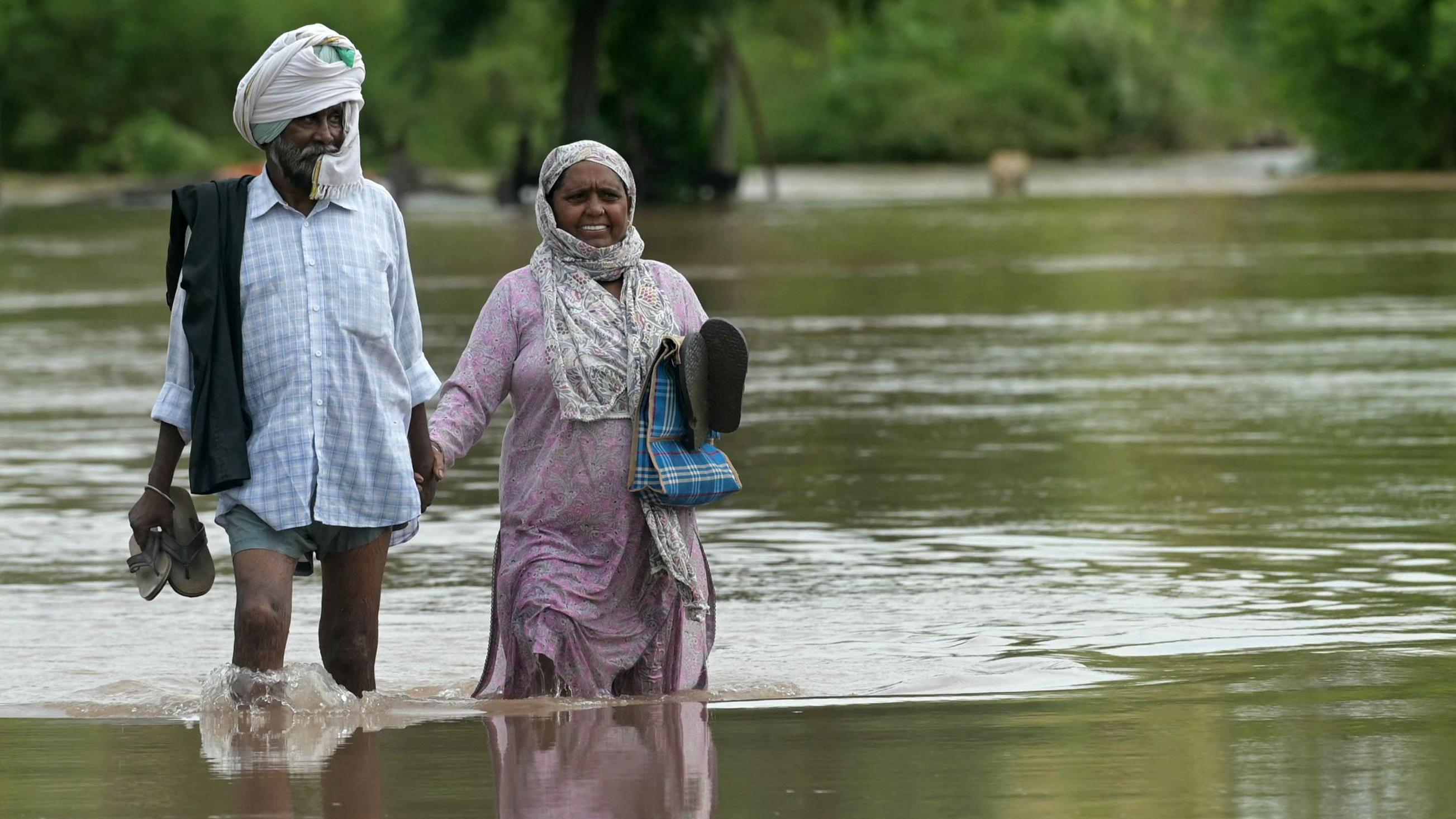India’s Inflation Seen Staying Stable Despite Devastating Punjab Floods and Heavy Rains
India’s Inflation Seen Staying Stable Despite Devastating Punjab Floods and Heavy Rains
By
Leah Rosenfeld
Last updated:
September 16, 2025
First Published:
September 16, 2025

Photo: BBC
Punjab Faces Worst Floods in Four Decades
India’s key agricultural state of Punjab is battling its most severe floods in 40 years, with nearly 300,000 acres of farmland submerged and over 500,000 people across 23 districts affected, according to state officials. Torrential rains have also hit other regions, including Himachal Pradesh, Jammu & Kashmir, and Telangana, raising fears of crop losses at a critical time in the farming calendar.
Despite the extensive damage, economists say the overall impact on national inflation is likely to be contained. HSBC noted in its Monday report that the floods are unlikely to push consumer price growth above the Reserve Bank of India’s (RBI) midpoint target of 4% for fiscal year 2026, within its 2–6% tolerance band.
Why Inflation May Stay Under Control
Analysts say the limited hit to cereal production and the country’s ample buffer stocks will prevent a surge in food prices. HSBC stated it was “not too worried about underlying inflation momentum” in the near term.
Breaking a nine-month downtrend, India’s consumer inflation rose to 2.1% in August from 1.5% in July, driven largely by spikes in vegetable, edible oil, egg, fish, meat, and fruit prices. However, Citi Research pointed out that daily all-India food price data for September has not shown any significant increase, even in flood-hit regions. Citi has now cut its average headline CPI forecast for FY26 to 2.9% from its earlier estimate of 3.2%.
Bank of America Securities added that while the heavy rains had a limited impact due to a higher base, the risk could increase if the wet conditions persist into the harvest season. It also expects the upcoming goods and services tax (GST) reduction from September 22 to exert further downward pressure on prices.
Monsoon Withdrawal and Regional Risks
The Indian Meteorological Department said on Sunday that conditions are favorable for the withdrawal of the southwest monsoon from Punjab and other northern states within three days. However, northeast India and parts of Maharashtra—another major agricultural region—are forecast to receive heavy rainfall until Wednesday, which could create localized supply disruptions.
S&P Global-backed Crisil warned that excess August rainfall across Punjab, Rajasthan, and Telangana could threaten crops in their advanced growth stages. Still, analysts maintain that the broad national supply chain has proven resilient enough to absorb such shocks without triggering widespread price spikes.
Implications for RBI Policy and Growth
India’s relatively benign inflation gives the Reserve Bank of India room to focus on spurring growth, especially as the country navigates trade challenges following the United States’ steep 50% tariffs on Indian exports.
HSBC projects that the RBI will likely cut its benchmark repo rate again in the fourth quarter of 2025, potentially bringing it down to 5.25%. Such easing would support credit expansion and domestic demand at a time when global trade headwinds are mounting.
With inflation pressures easing, analysts broadly agree that India’s economy remains well-positioned to maintain growth momentum, even as extreme weather events test the resilience of its agricultural backbone.
Popular articles
Subscribe to unlock premium content
The Rise of Silent Walking Tours in Historic Cities

The Rise of Ultra-Niche Cooking Classes Focused on Historical or Regional Recipes

The Rise of One-Person Dining Experiences for Ultra-Introverts in Major Cities

The Rise of Silent Walking Tours in Historic Cities

The Rise of Ultra-Niche Cooking Classes Focused on Historical or Regional Recipes

The Rise of Silent Walking Tours in Historic Cities









